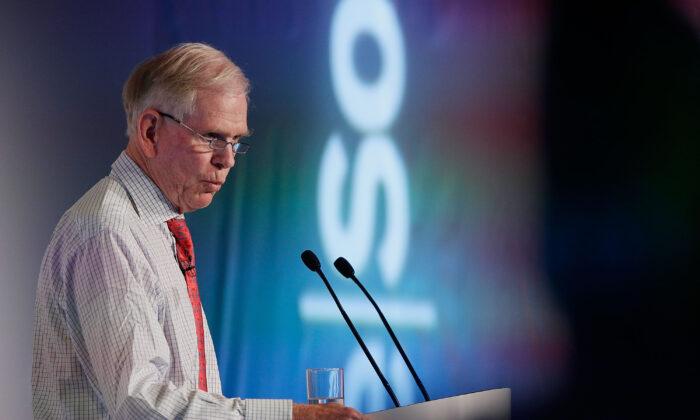The Bureau of Labor Statistics (BLS) released its quarterly “Productivity and Costs” report on Thursday, attesting to a 7.5 percent decline in nonfarm productivity—the fastest drop seen since the third quarter of 1947.
The BLS report attests to two simultaneous trends that have become manifest in the most recent financial quarter. On one hand, total hours worked rose by 5.5 percent since Q4 2021. Total hours worked surpassed the level of Q4 2019, a first since the arrival of the CCP (Chinese Communist Party) virus and subsequent lockdowns in Q1 2020.
At the same time, the output index decreased by 2.4 percent since Q4 2021. While this is still 3.5 percent higher than the level of Q4 2019, the significant quarter-to-quarter decline combined with a denominator of more hours worked result in a precipitous decline in the measured efficiency of labor.
Nonfarm productivity is a metric of labor value calculated “by dividing an index of real output by an index of hours worked by all persons,” according to the BLS. Thus, the combined effect of more hours worked and less output result in a dramatic drop-off in labor productivity of 7.5 percent.
This 7.5 percent plummet in nonfarm productivity is the most rapid quarterly decline in the metric since the decline of Q3 1947, the end of which coincided with the passage of the Labor Management Relations Act of 1947. This law, better known as the Taft-Hartley Act, curtailed the power of unions in the United States, and it is likely that this legislation was partially responsible for higher nonfarm productivity in subsequent quarters.
One anomaly to the BLS nonfarm productivity finding was the manufacturing sector, which reported higher productivity in the most recent quarter. This is attributable to a 5.7 percent quarterly increase in total output, sufficient to offset the 5.1 percent increase in hours worked.
The report also noted an 11.6 quarterly percent increase in labor costs, making for an annual increase of 7.2 percent—the highest annual increase since Q3 1982.
The backdrop for these findings is a quarterly decline in total economic output: In 2022’s first financial quarter, economic output contracted by 1.4 percent, after a year of rapid economic growth. Should the pattern continue into Q2 2022, the U.S. economy will officially be in a state of recession. The unusual trends in the labor market, supply chains, and inflation all suggest an economy which has yet to adjust to normalcy since the shock of the CCP virus, with the labor market reflecting a long and complicated recovery from an unprecedented experiment in mass unemployment at the beginning of the lockdowns over two years ago.






Friends Read Free